Backpacking for Beginners: 15 Rookie Mistakes To Avoid Your First Time Backpacking
Welcome friends, I’m super stoked to share this with you! Consider this list of common backpacking blunders and backpacking tips as your introduction to backpacking basics. These common but avoidable mistakes are an essential part of your backpacking 101 foundation.
Mistakes are a big part of how we learn, and we should never be so afraid of failure and mistakes that it prevents us from taking action toward our backpacking goals. However, this list might just help you avoid a few rookie (and all too common) mistakes beginner backpackers tend to make their first time backpacking.
Let me start off by telling you about my first time backpacking. Spoiler: I was a total rookie beginner backpacker, and I had barely even done much long distance hiking by the time of my first backpacking trip.
But I had just recently moved out to California, and one of my new friends at work was telling me all about how he had just won the lottery for Half Dome permits. I had so many questions. First, what did he mean he won the lottery, and second, what was Half Dome?
I almost die a little thinking about that question now because Half Dome is probably one of the best hikes in Yosemite, and maybe one of the most iconic hikes in the United States. But I was a total noob (aka newbie). I didn’t know anything about backpacking! Zero. Zilch. Nada. However, that year I moved to California, I was determined to make it the year of saying yes to things that scared me and that were unfamiliar and backpacking fit the bill perfectly.
My intense curiosity and questioning to my new California friend didn’t go unnoticed, and he actually invited me to join along (as they had an extra permit to spare). Yes! Heck Yes. Let’s do this Half Dome thing!
The next few months involved a lot of planning and preparing. I began saving as much as I could and made a trip to REI to buy “all the things” on the list of backpacking gear that my friend sent me. Except… I didn’t know which gear was most important to invest in, and I had absolutely no clue what the best brands or products were. So my priorities were a little off.
Nonetheless, I showed up to my first backpacking trip with 45 lbs of backpacking gear strapped to my back (yes you read that right, 45lbs) while wearing a visor, gym shorts, high black socks (with liners!), and a cotton tank top, carrying cheap twist-lock hiking poles. (Check out the photo above for a full look at my get-up!)
That first backpacking trip was an intense introduction to the world of backpacking. I truly had no idea what I was doing. I was carrying way too much gear. I packed all the wrong foods, I was freezing at night (shocking to me as it was super warm during the day!), and I was so slow on the trail because I didn’t prep or train at all for the trip. Good times!
But I’m so glad I still went, mistakes and all. That first backpacking trip altered the course of my life forever, and I went on to become an avid backpacker, mountaineer, and rock climber all thanks to that first backpacking trip.
Psst.. Are you ready to finally undergo your own backpacking transformation?
Join me (and your peers) on a transformational adventure, where you will learn how to confidently go on your first ever (or perhaps your first solo) outdoor backpacking trip without the constant fear of getting lost, the crippling worry of being unprepared, and the lurking feeling that you lack the "know-how" and skills required to stay safe on the trails. Click below to be the first to know when my one-of-a-kind backpacking program re-opens again for enrollment!
Backpacking for Beginners: 15 Rookie Mistakes To Avoid Your First Time Backpacking
Every seasoned backpacker has a story about how they learned things the hard way, and many of us wish we had gotten some extra backpacking advice before our first trip. Those moments when you realize that your pack weighs too much or you have more miles than daylight left really stick out as growing pains in your backpacking career.
However, as a beginner backpacker, you don’t need to make the same mistakes as those who have come before you. If you’re looking for a true beginners guide to backpacking, let’s dive in to the most common mistakes beginner backpackers make and what you can do to avoid them.
1. packing Way Too Much gear
Overpacking is the most common beginner backpacking mistake. When you carry your house on your back, it’s easy to get carried away! Plus, as a beginner backpacker, you often don’t have all the latest ultra-lightweight backpacking gear.
So not only are you getting used to carrying more, but you’re also carrying heavier versions of a stove, sleeping bag, and tent. There’s nothing inherently wrong with this – ultra-lightweight gear costs a pretty penny – but you want to be well aware of how much you’re carrying.
Forget big, heavy (and bulky) items, you won’t need, such as a pair of binoculars or a heavy camera. Invest in a simple backpacking cook set and leave the kitchen sink at home (or better yet, share a backpacking stove with a friend and split the weight!).
Food weighs you down in a hurry, so avoid taking cans, glass jars or moisture-laden foods that not only weigh a ton, but also are packaged in a bunch of trash you have to pack out.
GRAB MY [FREE] FULL beginner BACKPACKING PACKING CHECKLIST!
Want a full list of everything I recommend to take backpacking with you? Download our free backpacking packing checklist below!
Ideally, your pack should weigh between 20-35 pounds for an overnight excursion in mild temperatures (think lower-elevation mountains where you may need a jacket and hat at night). This includes crucial but heavy water which weighs a whopping 2.2 pounds per liter! Here are a few handy hacks to reduce your backpacking pack weight.
Wear the same clothes for multiple days. Backpacking is a dirty sport, so embrace it and practice smart backpacking hygiene principles. You only truly need a change of clothes after three or four days (but be sure to pack multiple pairs of socks to prevent blisters and to keep your feet feeling fresh at camp). Also, I always pack fresh undies, but otherwise, I don’t usually bring multiple items of clothing.
Share the load! Split tent weight, water filters, stove weight, and other shareable items with a friend. Some items in backpacking are easily shared, and this is a great way to save weight!
Phone smarts. Use an e-reader app on your phone instead of bringing a book. Also, keep your phone on airplane mode with location services turned off. This saves valuable battery life - allowing you to keep that bulky portable charger at home. But a a smaller, lightweight portable charger is definitely handy to have.
Plan calorie-dense meals. Bring dehydrated foods like granola, dried fruit, instant noodles, instant potatoes, peanut butter powder, and oatmeal that don’t weight a ton but pack in a lot of necessary calories.
Invest in down. While it’s true that down jackets and sleeping bags are an expensive investment, they are one of the best ways you can help reduce your pack weight! If you know you’re all in on the backpacking life, start looking for deals and invest in a good down sleeping bag and jacket. This is one of the first bigger investments I recommend my students to make in my backpacking course.
This isn’t an all inclusive list of ways you can reduce your pack load, but I hope it gets your gears turning to think of what you actually need to bring versus what might be extra. Weigh your pack BEFORE you hit the trails, my friend.
2. Trying to Tackle Too Many Miles
Carrying a bigger pack (especially if you are new to backpacking) likely means you’ll move a little slower and take more breaks. For your first few backpacking trips, don’t go for a mileage record. Instead, I like to recommend new backpackers keep their daily mileage between 7-9 miles max per day. If you are new to hiking in general, shoot for even less.
And take note on how long (in hours) it takes you to complete your full day of backpacking so you can start to get a good idea of how long it takes you to travel with a weighted pack. Ideally, you will have an idea of this before you hit the trails.
3. Planning Your Daily Mileage Without Considering Elevation Gain
Another thing to keep in mind when planning your backpacking trip is to know that elevation gain makes backpacking even harder with a weighted pack. Don’t go for the toughest backpacking route when you first set out. Instead, opt for something less challenging and more fun.
If you have no idea where to start, the average hiker moves at about two miles per hour or 1,000 feet of vertical gain per hour. For me, I’ve found that timing is rather consistent across backpacking, hiking, and mountaineering, but keep in mind, the mix is different for everyone.
4.Not understanding basic backpacking navigational skills
One of the most essential skills of backpacking is learning proper navigation in the outdoors. This starts with how to read a topo (topographical) map and extends to learning some basic ways to navigate with a GPS.
Typically, backpacking routes don’t tell you where to camp, so you have to find spots on your own. In order to be successful, you’ll need to know how far you plan to go per day and where that will put you on the map. And you’ll need to ensure that there are flat places to set up your home for the night.
You should always carry a digital map and a backup printed on good, old-fashioned paper. Both of these maps will likely be USGS topographical maps. If you aren’t familiar with how to read these maps, it’s important to get educated. Practice reading the map and comparing it to the actual environment before you head out on a backpacking trip.
5. Forgetting to Protect Your Snack Stash
There’s nothing more disheartening than coming back to camp only to find your food supply has been robbed by tiny mountain critters or worse. To avoid this beginner backpacking mistake be sure to keep all of your food, toiletries, and waste in odor-proof bags or bear cans.
When using odor-proof bags, they should be hung in a tree off of the ground at least 200 feet from camp to avoid any unwanted animal encounters. I like to put my odor-proof bags in a dry bag to hang them. This ensures my food will stay high and dry while I’m away.
Some wilderness areas require special canisters for bear territory. These canisters are cumbersome (and weigh a lot) but are absolutely necessary in areas with a big bear presence. Bear canisters can be stored on the ground, but should be kept well away from camp.
Always follow posted regulations regarding food storage, especially when it comes to the bigger creatures you don’t want to encounter. For instance, on popular California hiking trails, you are often required to use a bear canister to hold all of your food.
6. Sleeping with Smelly Products
As a follow up to backpacking tip #5 regarding food storage, another common mistake that many newbie backpackers make is not putting all of their smelly products away in their bear cans or odor-proof bags at night.
Before you go to sleep at night, make sure you put anything that smells into your bear can or odor-proof bag. This includes:
Wrappers from leftover bars and food
Sunscreen
Lip balm
Toothpaste
Deodorant
Scented wipes
Etc.
DON’T leave anything scented in your tent with you. Double-check your pockets before bed, too, or you might just wake up to a visitor sniffing at your tent.
Oh, and pro tip, make sure all your smelly stuff and food fit inside of your bear can BEFORE you hit the trails so that you don’t find yourself without room to spare for the sunscreen in your bear can at night.
GRAB MY [FREE] OUTDOOR BACKPACKER STARTER KIT
I created the Ultimate Outdoor Backpacker Starter Kit for you (and it's FREE)! This starter kit is filled with 14 pages of my best hiking and backpacking tips to help you learn what it takes to become a safe, confident, and self-sufficient outdoor backpacker!
7. Testing Gear for the First Time On the Trail
Another big no-no when backpacking is hitting the trail before you’ve tested out your newly purchased gear. Take some time to test your gear and make sure you know how to use it properly before you head out.
Let me give you a few key examples:
Do you know how to set up your tent?
Do you know the proper height to adjust your hiking poles to?
Do you know how to filter your water with that new water filter you just purchased at REI?
Have you hiked in your new hiking boots to make sure you don’t get bad blisters from them?
Have you tried using that new backpacking stove yet?
Get to know your gear. Trust me, you’ll be happy you tested it out beforehand.
8. Skimping Out on a Few Creature Comforts
Backpacking isn’t all about suffering – it’s worth it to bring one or two special items to make camp cozier. The two things I will never skimp on are footwear and my sleep system.
Wear properly broken in shoes or boots that fit correctly to keep your feet happy. Once you get to camp, take a load off and let your feet breathe. This means possibly either bringing camp sandals or simply sitting down and taking your boots off.
When it comes to sleep, you’ll want to be off the ground. The ground sucks up valuable body heat. A simple sleeping pad not only keeps you insulated, but it helps alleviate pesky pressure points.
Lastly, give yourself just a touch of indulgence by choosing one luxury item to bring with you. For some, this could be a light-weight camping chair or for others it’s an inflatable backcountry pillow. For me, its usually an extra bit of dark chocolate for bedtime, and sometimes a good old-fashioned book. Whatever it is for you, bring it and indulge!
9. Ignoring Important Foot care on the Trail
Learning how to take proper care of your feet while backpacking is probably one of the most crucial backpacking tips for beginners I can share with you.
First, always aim to prevent blisters. Dealing with blisters is a pain, seriously. And it can really dampen your whole backpacking experience.
One of the best ways to prevent blisters, is to change your socks frequently when you are hiking. I always bring at least 2-3 pairs when I’m backpacking. Usually I have 2 lighter thickness pairs for hiking in during the day. I switch them out frequently, and let the extra pair dry on the back of my backpack.
Another important part in preventing blisters is keeping your feet clean. So at the end of each day, bring some water to camp and wash the dirt and debris off your feet. This will help prevent rubbing and blisters in your shoes.
Then make sure to let your feet air dry in the evening when you are camping. Dry feet are happy feet, my friend. You can also bring a small microfiber camp towel to dry them off, especially if you’re backpacking in rainy or wet conditions.
Also, learn how to properly treat blisters if you get one. If you do happen to get a blister on your foot when backpacking (and you probably will one of these days), make sure you know exactly how to treat it beforehand.
If you notice a hot spot or blister, address the problem right away with moleskin or liquid blister prevention. Raw feet will certainly ruin a backpacking trip. Not to mention, if open wounds go unattended, they can lead to nasty infection.
10. Forgetting to Write a safety Trip Plan
As much as we want everything in life to be perfect, sometimes things don’t go as we expected. A safety trip plan helps to let others know where you are, what your plan is, and what to do if something goes wrong.
It’s not only important to write a trip plan, but it’s equally important to leave it with someone you trust. Here’s an overview of what to include in your plan:
A detailed description of where you are going - it helps to include specific info such as where you plan to camp.
A description of your vehicle (with license plate number), yourself, your clothing, your tent and gear, and anyone who may be traveling with you. Include helpful medical info such as allergies or pre-existing conditions.
When you expect to be back and what to do if you haven’t checked in. Give your emergency contact instructions on how to call search and rescue as well as the local ranger station. Don’t forget to check in with your emergency contact once you’re back in service!
11. Bringing Too Much (or Too Little) Food
Planning meals when you don’t have a kitchen can be a little tough for the newly initiated backpacker. We already spoke about avoiding foods that have heavy water content or heavy packaging, but just how much food do you need?
The average backpacker burns around 3,000-6,000 calories a day. I don’t typically eat this much in a day though, even when I’m backpacking. So when I pack for a backpacking trip, I typically only bring about 2,000 calories a day worth of food.
You’ll start to learn what your body needs, but for beginner backpackers, it’s probably good to err more on the side of too much food rather than too little. Don’t go overboard, but maybe try 3,000-4,000 calories per day, and then see how much you actually eat on your first trip and adjust from there.
In order to make the most of your food-to-weight ratio, you’ll want foods that are high in carbohydrates and fat (say buh-bye to that diet food). Don’t be shy, you’ll burn through it quickly, especially if you’re backpacking at elevation.
12. Packing too Many Sweet Foods and Candy Bars
Another food mistake that beginner backpackers often make is packing too many sweet foods when planning out your backpacking meals. It’s easy to just grab a bunch of bars and candy to take with you on your backpacking trip and call it a day. While a few bars are definitely great for quick energy you can munch on while hiking, trust me, you will get sick of too much sweetness really fast.
When I’m backpacking, I actually usually prefer saltier foods. I like to bring things like crackers, cheese, tortillas, salted dehydrated veggies, small packages of olives, roasted nuts, sour gummy worms etc. Don’t get me wrong, I still pack bars (and a little bit of chocolate) too, but I definitely prefer my salty snacks.
13. Forgetting Your Emergency safety Supplies
On a mission to make sure your pack doesn’t weigh 100 pounds, you forgot a lighter. Or perhaps you ditched that rain layer after reading the forecast. Oops! Make a list and check it twice before you hit the trail. Always be sure to pack the Ten Essentials, just as you would on a day hike.
It’s always a good idea to carry a spare pair of socks (in case your feet get wet), rain gear, and a warm layer in case temps are a bit chillier than you anticipated. You may not use everything you carry, and that’s just fine, but you’ll be happy you have a first aid kit or extra headlamp batteries should you need them.
It’s important to be strategic with your emergency items, and plan for redundancy in your most critical pieces of gear. A good example of redundancy emergency gear is with your water filtering method. Even if you are packing a pump or squeeze filter, plan to carry a few iodine and chlorine pills as well for backup. Trust me, you don’t want to get five miles into the wilderness only to find that your water filter is clogged (may or may not be speaking from experience here).
14. Disregarding Leave No Trace principles
Protecting our wild spaces is at the heart of being an outdoor enthusiast. Respect for this fragile planet is so important and just because we get away from it all in the wilderness doesn’t mean we get to throw the Leave No Trace Principles out the window. In fact, it means we need to take extra care to pack everything out (this includes toilet paper and even biodegradable products), respect fresh water sources, and leave the areas we visit better than we found them.
It may be tempting to plop your tent right at the water’s edge of a scenic alpine lake, but did you know that by doing so you are exposing a sensitive watershed to pollutants? When you backpack you are going to impact the pristine environment around you. Always be sure to uphold LNT principles, even if it isn’t the easy thing to do.
15. Trying to Learn Everything on Your Own
Last but not least, don’t try to learn everything by yourself. A sure fire way to get frustrated and feel helpless is by trying to learn everything you need to know about backpacking by yourself. In fact, one of the best ways to ensure that you have a long and fruitful backpacking future is to make sure to find a crew of like-minded friends and companions to hit the trails with.
Not sure where to look to find new hiking and backpacking companions? Check out our post on hiking groups to learn more.
You can also take courses and training to learn the skills you need to be a confident and self-sufficient backpacker on the trails. Seek out mentors who are more experienced than you and who can teach you a thing or two about the outdoors and overcoming your fears on big adventures.
I owe a lot of what I know to those who taught me all about backpacking and am immensely grateful for those mentors who took me under their wings to teach me essential backpacking skills. Not to mention, some of my closest friendships have developed with people I’ve gone on backpacking trips with.
Join MY BACKPACKING PROGRAM
Join me (and your peers) on a transformational adventure, where you will learn how to confidently go on your first ever (or perhaps your first solo) outdoor backpacking trip without the constant fear of getting lost, the debilitating worry of being unprepared, and the lurking feeling that you lack the "know-how" and skills required to stay safe on the trails. Click below to be the first to know when my one-of-a-kind backpacking program re-opens again for enrollment!
These 15 beginner backpacking tips and tricks are just a few of the things you’ll learn as you get started backpacking. Backpacking is a wonderful outdoor activity, and everyone who is a backpacking expert now was new to backpacking at some point.
Learning through your mistakes is certainly a part of the process. Every well-seasoned vet has made at least one of these common backpacking mistakes, some of us more than once.
But now that you’re aware of these common mistakes, you’re more empowered to get out there and tackle the trail like a pro. You’ll want to continue to learn about more aspects of backpacking, like which gear to invest in, how to train properly for big objectives, plan for bad weather, and much more as you continue on your backpacking journey.
Of course, you can’t learn everything you need to know from reading a blog post about how to go backpacking or from taking a course on backpacking – part of your learning experience must include hitting the trails and learning from your mistakes as you go. That’s just the way it is, my friend. Failure is our best tool for progress in the outdoors, so we’ve got to be willing to fail in order to reach great heights (pun intended!).
I just hope I’ve helped you avoid a few critical mistakes before you attempt your first backpacking trip.
Looking for even more backpacking tips?
Check out these other posts to help you along your backpacking journey:
The Ultimate 3-5 Day Backpacking Packing List for 2019 (PLUS Backpacking Checklist PDF)
7 Tips to Hiking and Summiting Your First Fourteener Mountain
Have more questions about beginning backpacking? Let me know in the comments below!
Cheers,
Allison - She Dreams of Alpine

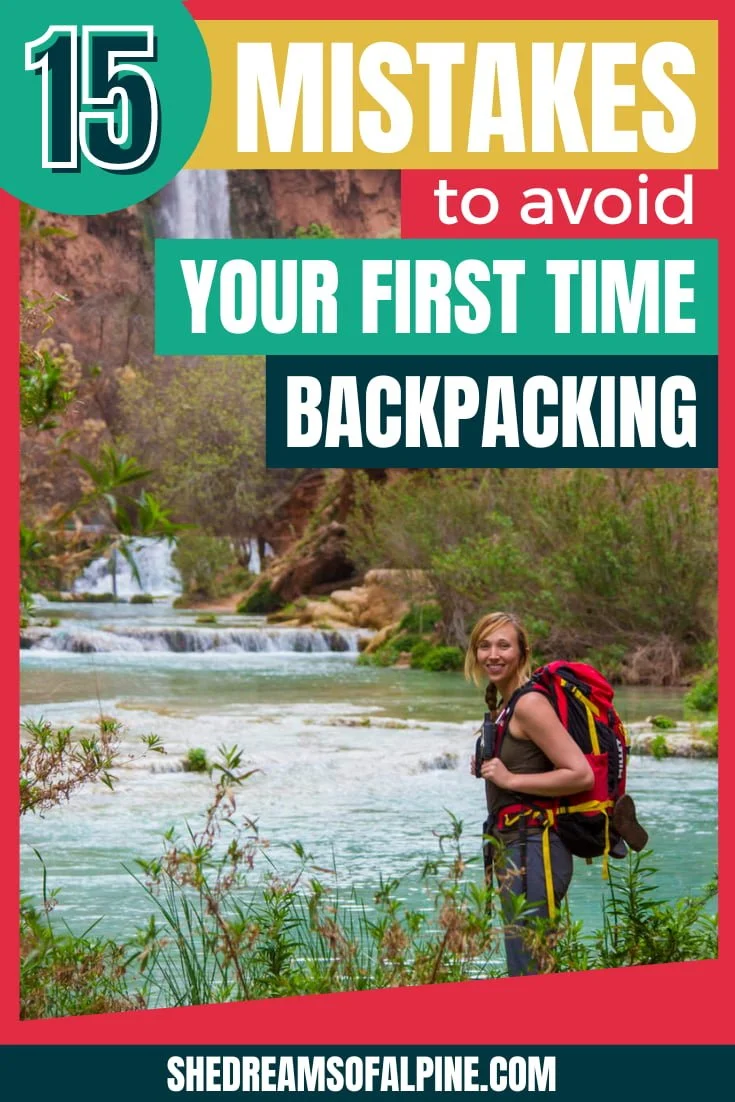
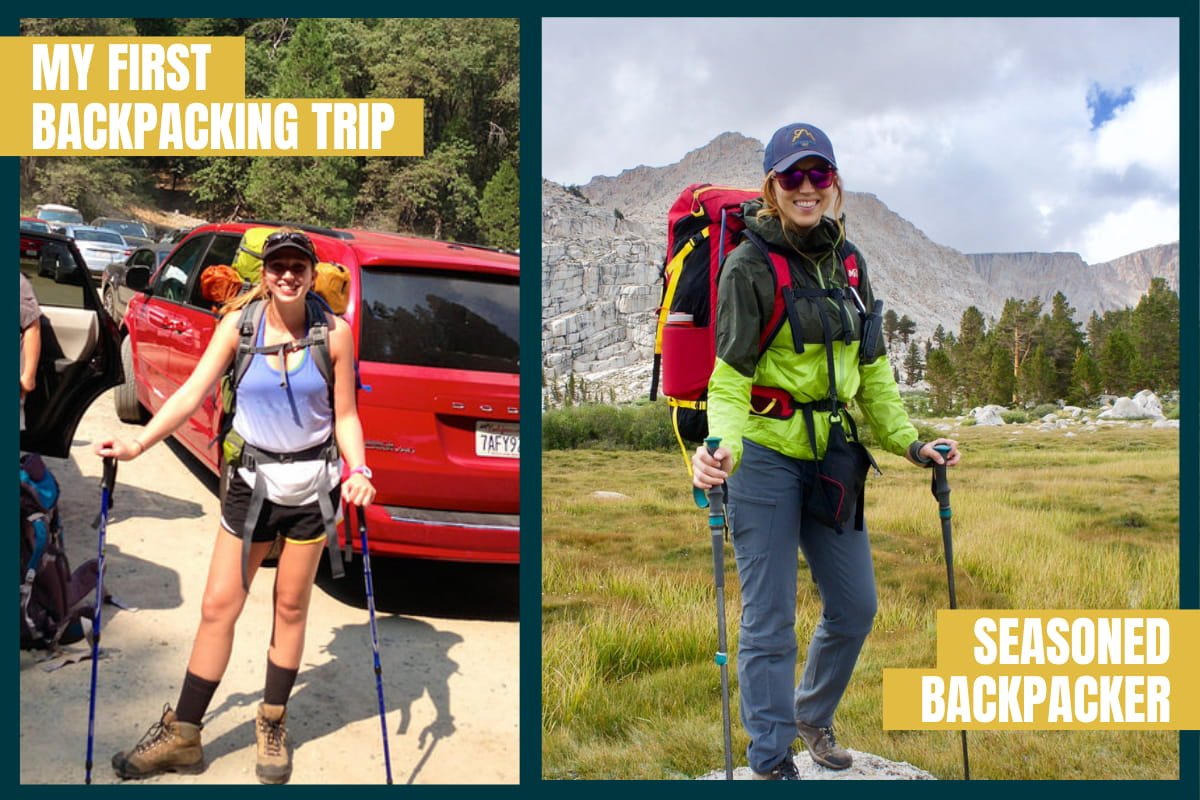
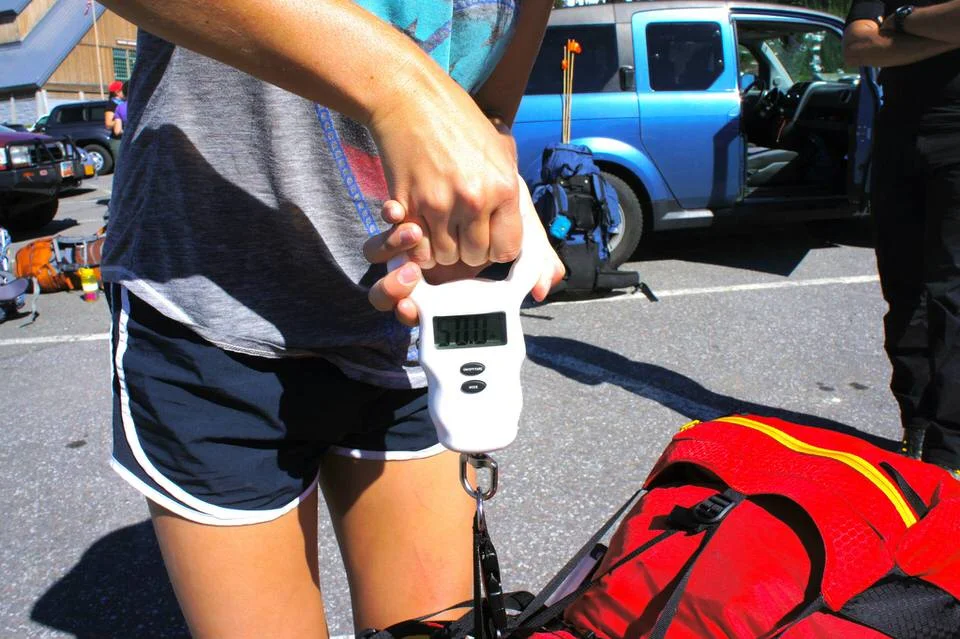

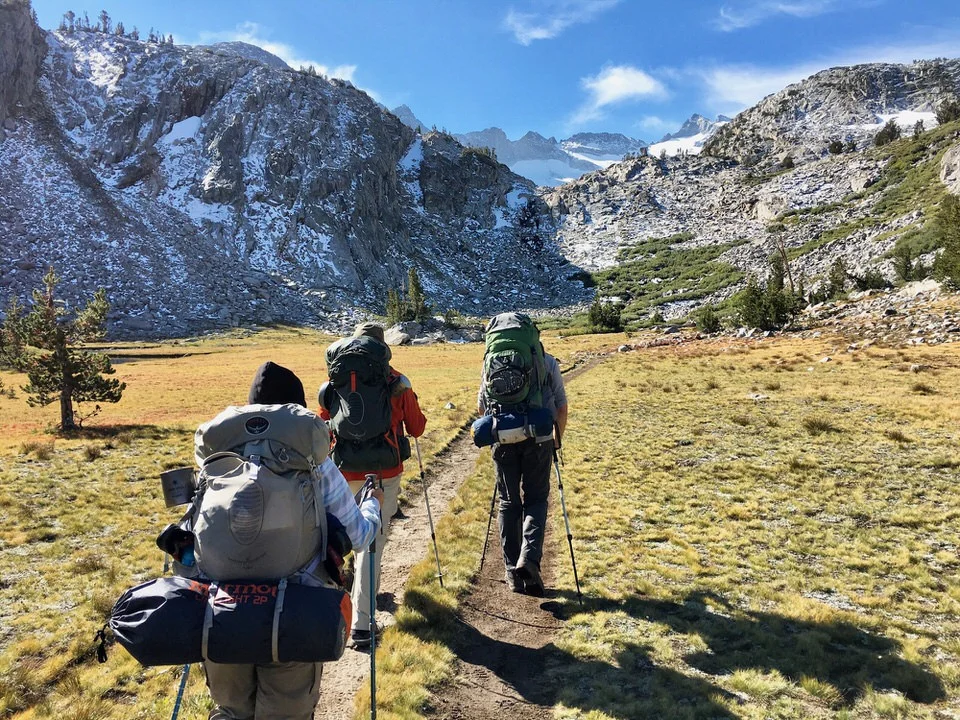
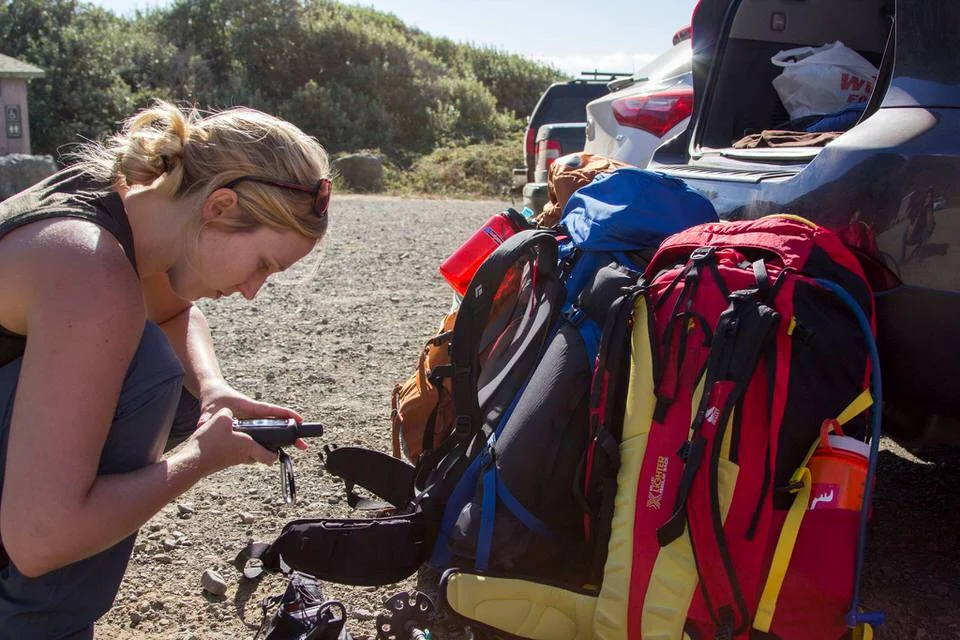
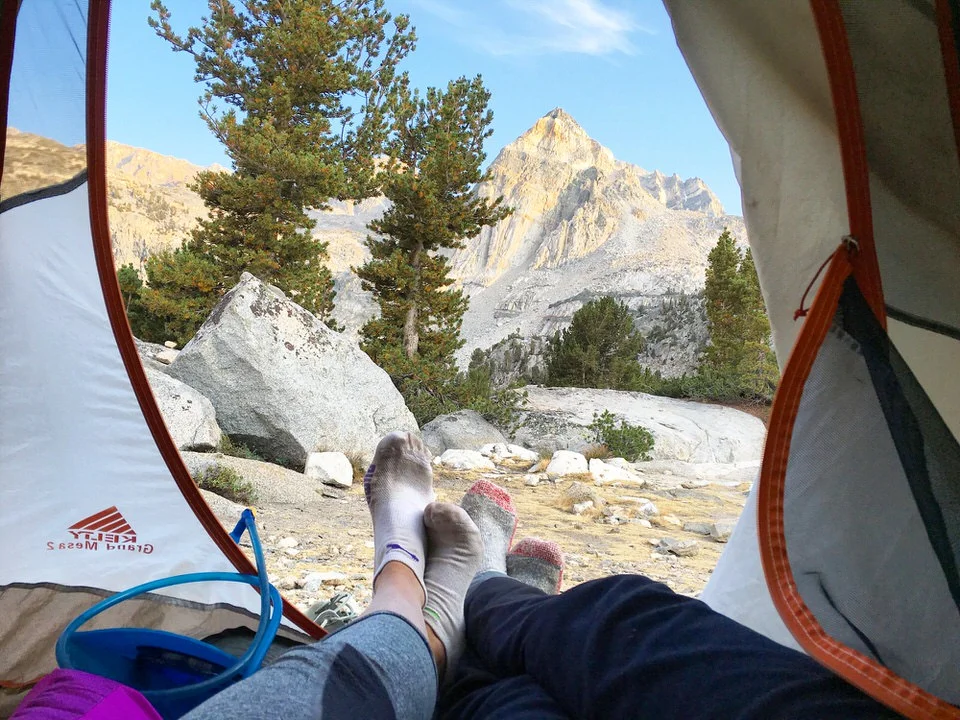

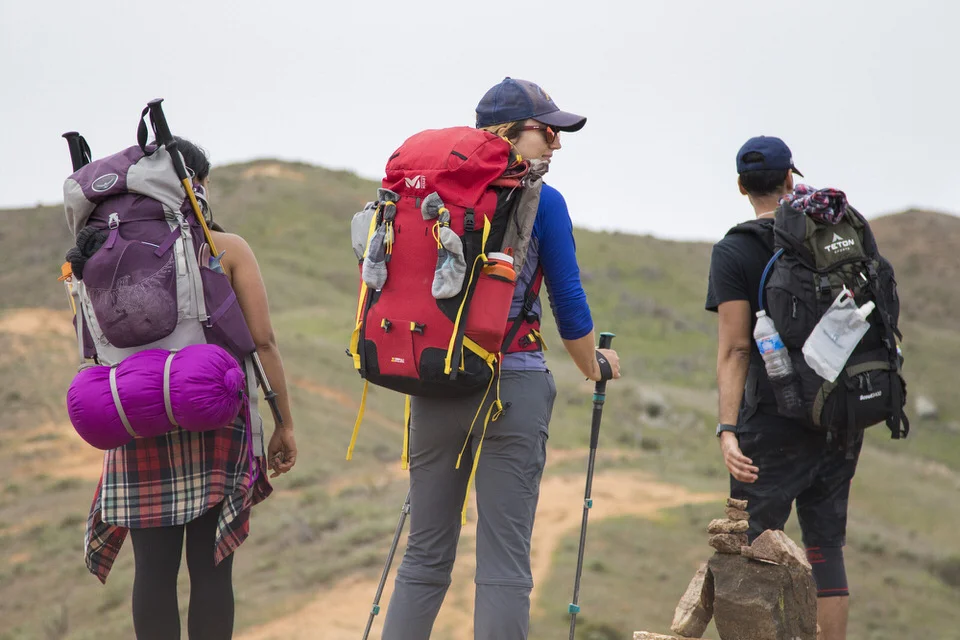

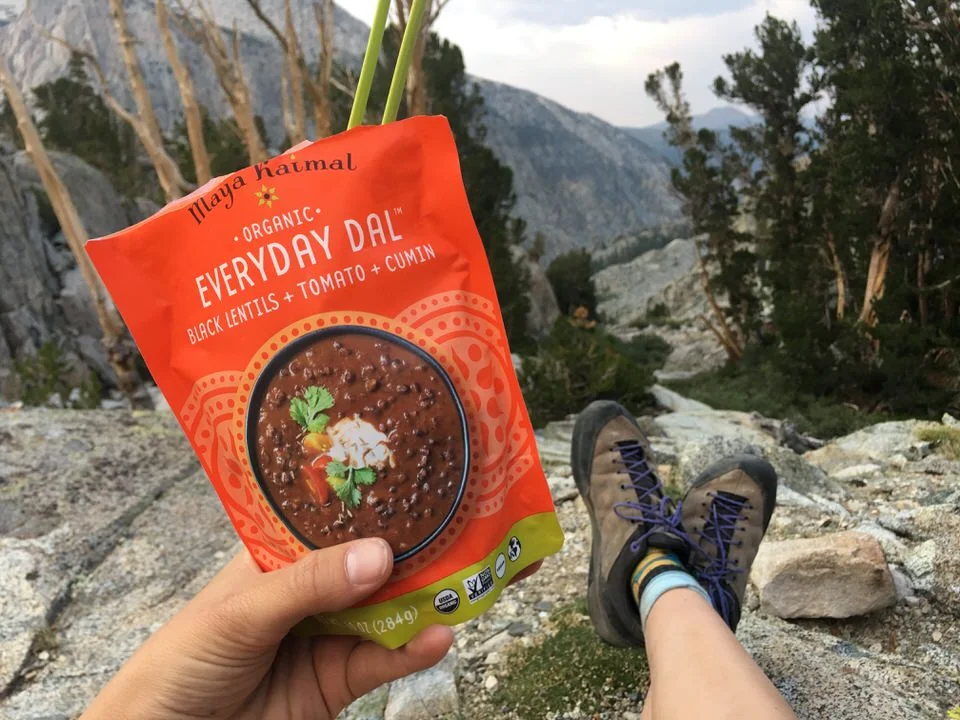
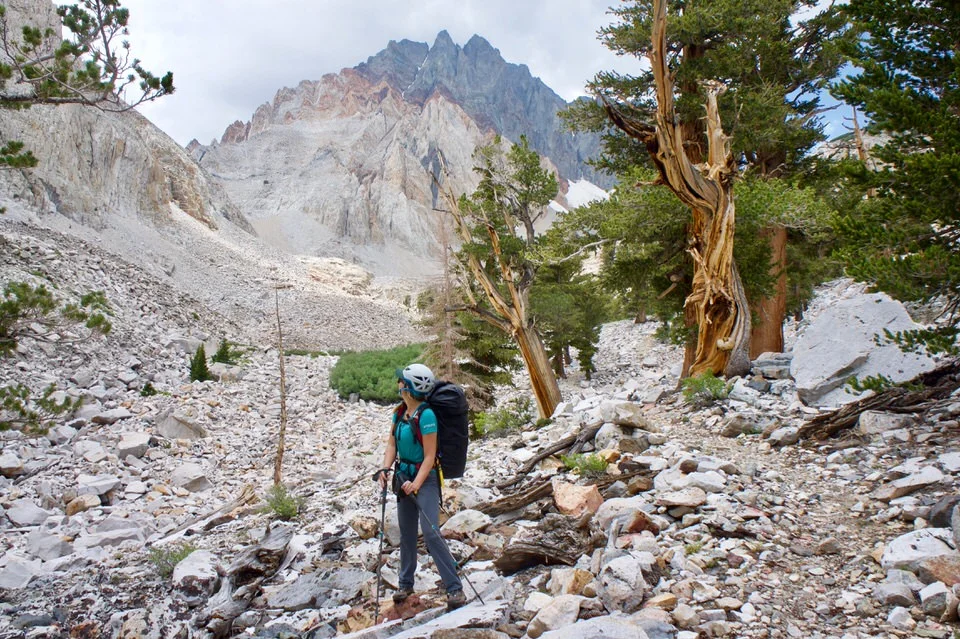
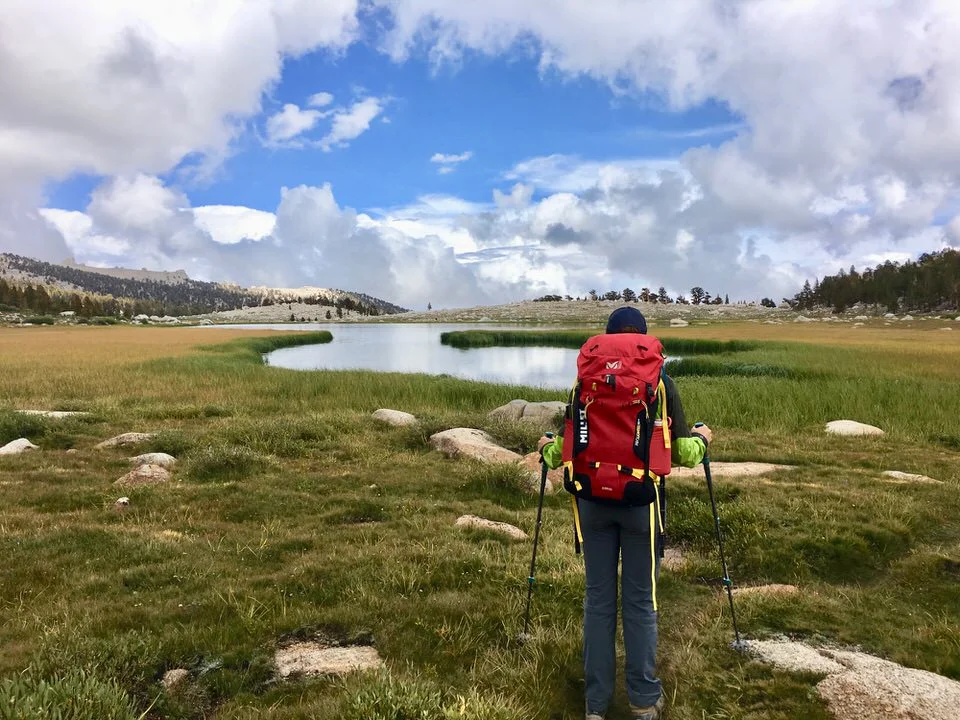

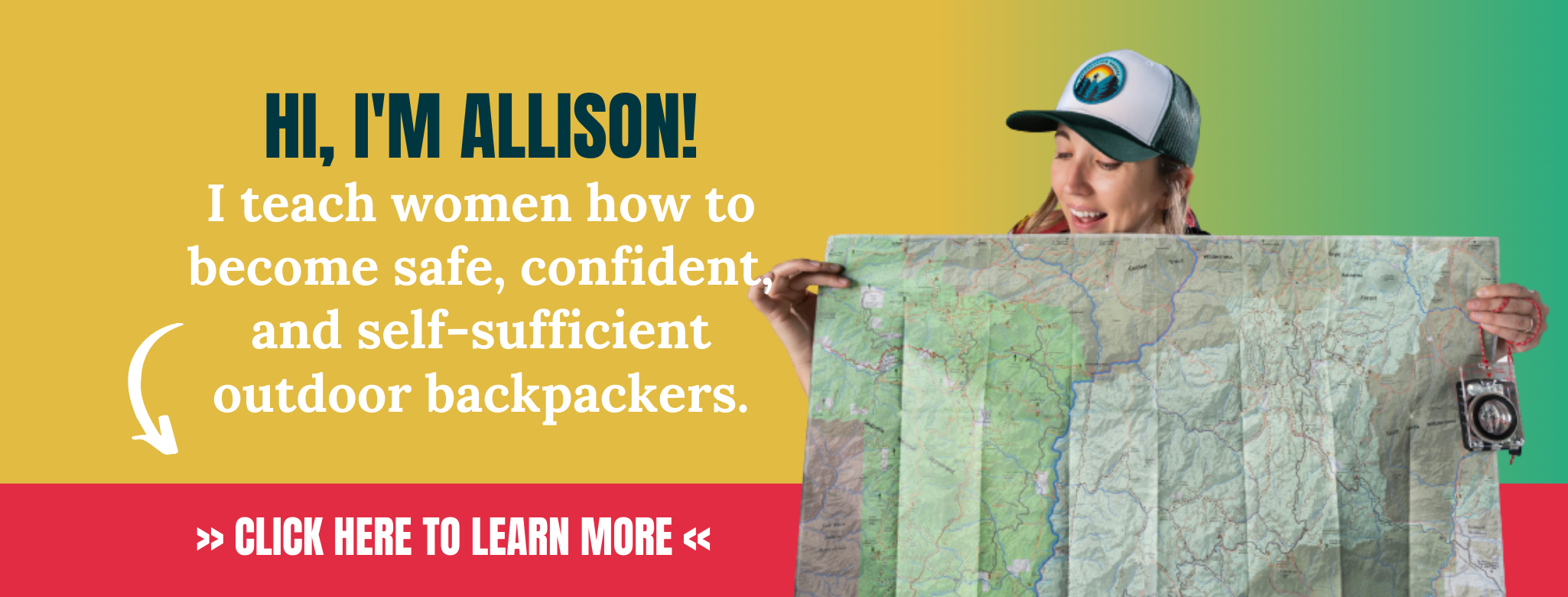


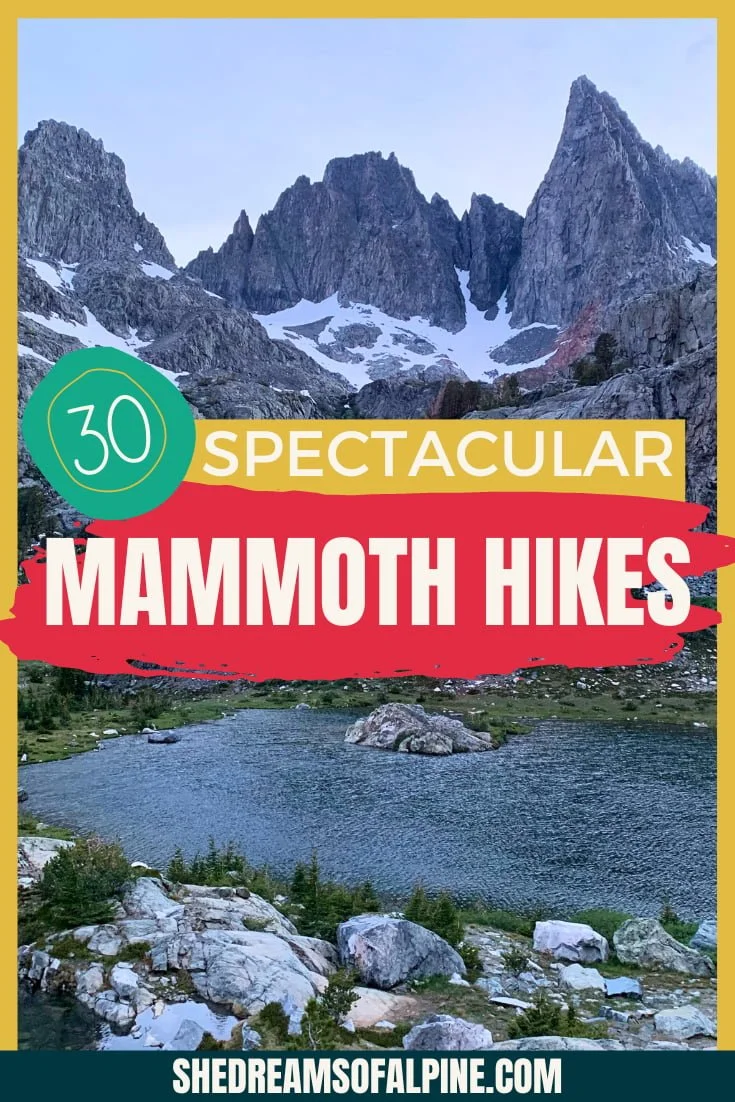







27 of the Absolute Best Hikes in Yosemite National Park to Put on Your Hiking Bucket List | Yosemite National Park is one of the most beautiful national parks in the entire United States, and one of the best ways to explore the park is via one the many amazing hiking trails. In this post, I’ve detailed 27 of Yosemite’s top hiking trails, ranging from difficult to easy, that give you epic views of Yosemite’s grand backcountry and some of Yosemite’s most famous landmarks. You’ll only fall more in love with Yosemite after going on one of these hikes! | shedreamsofalpine.com